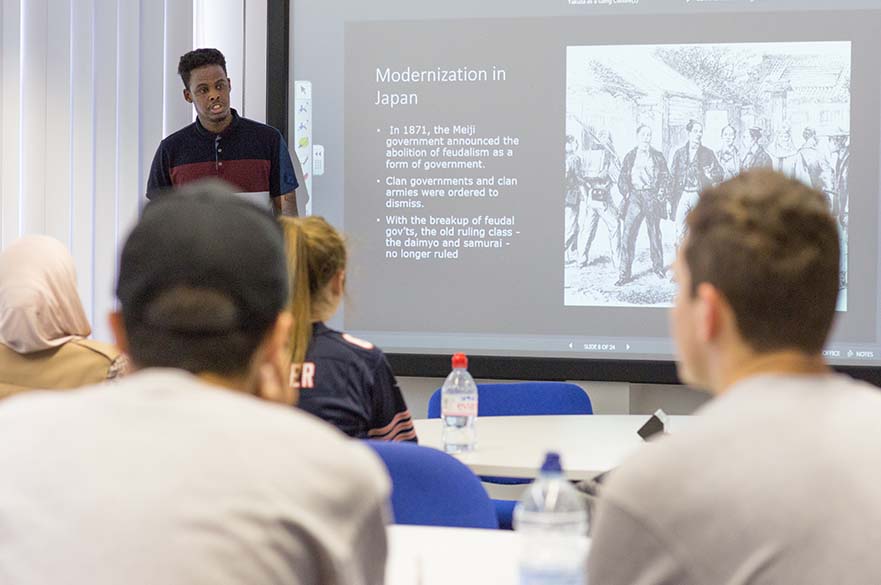Semester Two World History Study Guide
A return to the ideas of the Roman and Greeks – sculptures of human body like David Focus on grammar, history, rhetoric (speech)- Dante, Shakesspeare- plays were history; Julius Caesar Religion was more individual- people have a relationship with God= Piesta, Sistine Chapel, Last supper -Religious scenes Believe that God created Humans and therefore what humans made was important Focused on how things worked- human body, machines – Da Vinci- flying machines, diagrams of the body, Rembrandt’s portraits.
Sat Subject Test World History Study Guide
Aug 12, 2016 - During your first semester of AP World History, study the content in the notes that your class has already covered. I'd recommend conducting a.
In a hunter-gatherer society, the man is regarded as the hunter while the woman is the gatherer. They were nomadic and lived off of the land. Wherever the game went, they followed it.
They lived in small groups and were patriarchal. The population growth was really slow and that two people onl y needed one square mile to survive. Some more characteristics of hunter-gatherers were the use of stone tools, the spread of humans around the world, cave paintings and rituals, and the domestication of some animals.
Some scholars prefer to define civilizations only as societies with enough economic surpluses to create division of labor and a social hierarchy. The chief difference between civilizations and other societies involves the emergence of formal political organizations, or states.
Another trait that makes a society a civilization is when the society can produce political units capable of ruling large regions. More traits are when a merchant and manufacturing class is present, and when almost all societies have sedentary agriculture and food surplus.

The Tigris-Euphrates River V alley is also called Mesopotamia, o r the Fertile Crescent. The Sumerians were the first people who invad ed this region. They had organized city- states ruled by a king who h ad divine authority. The Sumerian state also had carefully defined boundaries. The Sumerian government helped regulate religion and enforce its duties, and provided a c ourt system. Kings were the military leaders, and with the nobles, and the priesthood, they controlled the land, which was worked by slaves. Babylonians eventually conquered the Sumerians and e stablished a very harsh code of law, Hammurabi’ s Law Code.
The main social division was between the land-owning gentry and the peasants. Beneath the peasants were the “mean” pe ople which had the un skilled jobs. At the top of the hierarchy it was the land-owning aristocracy and bureaucrats. Next were the laboring masses which were the peasants, artists, and laborers. Then it was the “mean” people. In the social hierarchy of the family, the father was the head honcho, while the mother had to listen to him.
Even when the mother is under the father, she had a lot of influence with her children. The children came last with the oldest male at the top of the children.
The most persistent features of India involve regionalism which allowed local rulers to maintain rule as long as loyalty was observed to the overarching Indian government. The early Mauryan dynasty rulers depended on their armies. The Gupta dynasty was ruled by creating a demanding taxation system, spreading uniform law codes, sponsoring general service (ex. Road building), and relying on tricks to remain in power. There was also no single language in the Gupta dynasty and did not have a bureaucracy which allowed local rulers to maintain regional control.
The caste system gave India the most rigid overall framework for a social structure. It provided a way for various races to live together, just in different castes. The social standing that one is in canno t be changed and is hereditary. Each class is called a varna and each person had an obligation to work, care for his/her family, and various other things to help the community. It also described features of economic and social life.
The Brahmans (priests) were the highest caste then the Kshatriyas (warriors) then the V aisyas (working class) then the Sudras (common laborers) and last the Untouchables who were outside the caste. Hinduism: It was the religion of India’s majority. It believed in reincarnation and if a person p rayed for a long time and ha d correct actions in his or her ’ s life then that person could reach a higher caste. Hinduism had no major god, and no central figure. It also encouraged arthra (secular goals), and karma (worldly pleasures). There were several gods two being Vis hnu (the preserver), and Shiva (the destroyer). Hinduism was also very tolerant of other religions and adaptable to them and it emphasized good and evil behaviors Buddhism: Buddhism believed in achieving nirvana which is the state of nothing or enlightenment.


Buddha was the god of the religion. Buddhism did not b elieve in the caste system and it believed that one could be holy at any level. Buddhism also believed in reincarnation but not actually moving higher or lower on the caste system. The ultimate state in Hinduism was brahma (being o ne with everything) while the ultimate state in Buddhism was nirvana (becoming nothing).